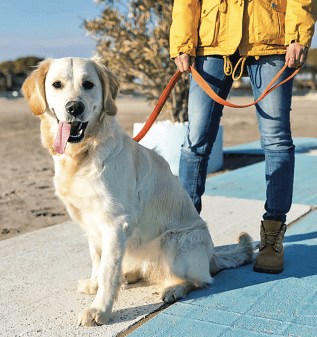Dog Life: When training your dog, you reap what you sow

Let’s make a few things clear about training your dog. All unwanted behavior is caused by the owner. Either it was never corrected or guided when your dog was young and you brought it home. If your dog goes up on the couch and you allow it, several things happen. You give them a high position and then you get challenged when you want them off, especially when they are older. Nothing is wrong with them being on the couch if you asked them to get on, not when they decide. Yes, it’s cute having a puppy next to you on the couch as long as you have asked them to get on. Also, make sure they don’t stay on the couch when you’re not there.
Give them a marker. In other words, let them associate with a towel. If the towel is on the couch and you give a verbal command, that’s okay. When you’re not there, remove the towel and don’t let them get on. After a few times, they will understand. The same thing applies to older dogs. Make sure you apply this to the couch, chair and your bed. If the dog sits or lies down at the same level, they won’t see you as alpha. Little things like that will make you boss (in charge). That was just one small thing.
• Don’t feed them from the table. They will get used to it and later always bother you.
• In every household the dynamics are different, so not one method will or can be used to fix behavior. Behavioral diagnostics differ from one environment to another; there will be many variables to consider. Also, your dog’s character, temperament, age, gender and history play a huge role in guiding and correcting their behavior.
• As behaviorists, we must look at everything. Is it man-made? Is it genetics? Or is it a rooted behavior? We must assess this before trying to fix the problem.
• Your dog ate the couch. What do you do? Get a professional, no-nonsense trainer. In the long run, you don’t have to constantly replace your couch. Believe me, it’s cheaper getting a trainer than replacing couches.
• Dogs are like kids. If you guide them from day one and show them what is required of them, they will show respect. In general, compare the kids of the past and today’s kids – big difference. Not saying all, but most.
• As cute as your dog is, don’t give in. Be firm and teach them. What you see on YouTube or Facebook, most are the trainers’ dogs. Or they have put a lot of time into their training.
• Treat training (bribery) should only be used for trick training. You can sometimes use it like a lure, but not for training. Ask your child to do a few chores – they probably won’t. Offer them a new phone – they will.
• You reap what you sow.
• Training time should be done when you are not frustrated. If you are frustrated, do it at a later time.
• If during your training session your dog does the command properly five times, finish it off on a positive note. A few hours later, do it again. This way neither you nor your dog will get fed up.
• Mix the commands up. Don’t do them in order.
• Always have them on a leash. It’s safer, regardless of how well they have been trained.
• Dog parks are not the best place. It’s a matter of time before they get into a scuffle with another dog.
The amount of time you designate toward your training will show. Your dog will tell the trainer how much time and effort you have put in. Dogs don’t lie.
About the author: Harry Kalajian M.D.T. has over 35 years of experience in all aspects of training including behaviorist, ethologist, psychologist. Visit executivedogtraining.com or caninebehavioraldiagnostics.com or call 941-662-1431









